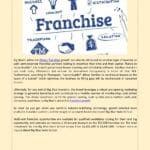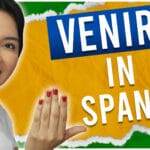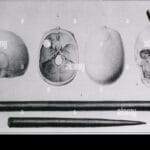The Magic and Reality of Misty
Grab a comfy seat and join us as we delve into the captivating world of “Misty of Chincoteague,” a beloved children’s classic. This charming tale has enchanted generations, but how much of it is rooted in reality? Let’s put on our investigative hats and explore the fascinating blend of fact and fiction that makes this story so enduring. [https://www.lolaapp.com/meister-eckhart-philosophy]
Debunking the Shipwreck Myth
The book paints a romantic picture of the Chincoteague ponies’ origins: a Spanish galleon shipwrecked off the coast of Assateague Island, leaving the horses to swim ashore. While this dramatic tale adds to the mystique, it’s likely fiction. Scientists suggest the ponies probably arrived via a less dramatic route, possibly swimming from the mainland during a storm or brought over by early settlers. The true origin remains a mystery, prompting ongoing research into various possibilities.
Misty’s Real Story: A Chincoteague Native
Misty herself was indeed a real pony, but her upbringing in the book differs from reality. While the story portrays Misty born wild on Assateague and captured during a Pony Penning, the real Misty was born and raised on Chincoteague Island at the Beebe Ranch. This fact adds a different dimension to her story, shifting the narrative from a wild capture to a heartwarming tale of domestic upbringing.
The Pony Swim: More Than a Tradition
The annual Pony Swim is a central event in the book and a real Chincoteague tradition. While the book captures the excitement, it simplifies the complexities of wild horse management. The swim isn’t merely picturesque; it’s a vital tool for controlling the pony population, ensuring herd health, and protecting Assateague’s fragile ecosystem. Moreover, the auction supports the local fire department, adding another layer to this multifaceted event.
Ethical Considerations: A Complex Issue
The book celebrates the Pony Swim without fully exploring the ethical concerns surrounding capturing and selling wild animals. Some argue it commodifies the ponies, disrupting their natural behaviors. Others maintain it’s essential for their long-term well-being and habitat preservation. This ongoing debate encourages reflection on our relationship with wild animals and the balance between tradition, conservation, and animal welfare.
Chincoteague Island: Tourism and Its Impact
“Misty of Chincoteague” has undeniably shaped Chincoteague Island’s identity, boosting tourism and linking it to wild ponies galloping across beaches. It’s also popularized activities like pony trekking. However, the impact of increased tourism on the island’s environment and the ponies themselves requires careful consideration. Balancing economic benefits with responsible stewardship of this unique ecosystem remains an ongoing challenge.
Is Misty of Chincoteague True? Separating Fact from Fiction
“Misty of Chincoteague” tells a heartwarming story, but how much truth lies beneath the narrative? Let’s dissect the book and uncover the balance between fact and fictional embellishment, exploring the origins of the Chincoteague ponies and the captivating tale woven around Misty. [https://www.lolaapp.com/phineas-gage-book]
While inspired by real events, the book is ultimately a work of fiction. It takes the real Misty and her surroundings, adding a touch of magic and imagination, particularly for young readers.
A key difference lies in Misty’s birthplace. The book places her birth on wild Assateague Island, while in reality, Misty was born on the more settled Chincoteague Island, home to the famous Pony Penning. This annual event, where ponies swim from Assateague to Chincoteague, accurately depicted in the book, is a vital part of Chincoteague’s heritage.
The most enchanting (and perhaps misleading) element is the Spanish galleon shipwreck. This story, with no historical basis, enhances the ponies’ mystique. Likely rooted in local folklore, it captures the imagination despite its probable inaccuracy.
The Beebe family, however, is genuinely central to Misty’s story. They raised her on their Chincoteague farm, forming a deep bond and even teaching her tricks. Author Marguerite Henry drew inspiration from their experiences and connection to the island, forming the story’s heart.
The book’s portrayal of Misty’s father, the dramatic black stallion Phantom, is another fictionalization. Misty’s actual father was a chestnut stallion. This artistic license creates a more captivating narrative.
Here’s a summary of key differences:
| Feature | Book Version | Real-Life Version |
|---|---|---|
| Misty’s Birthplace | Assateague Island | Chincoteague Island |
| Misty’s Father | Black Stallion (Phantom) | Chestnut Stallion |
| Spanish Galleon | Shipwrecked, ponies swim ashore | No historical evidence |
| Beebe Family | Central to the story | Central to Misty’s life |
This embellishment doesn’t diminish the story’s value; it creates a more engaging narrative. There’s ongoing discussion on balancing accuracy and storytelling, especially in children’s literature. Some prioritize strict factual adherence, while others believe embellishment can foster a love of reading.
“Misty of Chincoteague,” though not entirely factual, offers a glimpse into Chincoteague Island’s unique culture. The story, filled with heart and adventure, continues captivating readers, encouraging appreciation for the ponies and fostering wonder about the natural world. While the complete, unadulterated truth may remain elusive, the book’s enduring popularity suggests that a touch of magic can make a story truly unforgettable.
The Enduring Charm of Misty: A Story Summary
“Misty of Chincoteague” unfolds on Chincoteague Island, Virginia, famous for its wild ponies and the yearly Pony Swim. It’s a story of dreams, determination, and the unique bond between humans and animals, focusing on the Beebe children and their extraordinary pony.
Paul and Maureen Beebe yearn to own one of the wild Chincoteague ponies, descendants of Spanish mustangs. The annual Pony Swim, where these horses swim from Assateague to Chincoteague, represents their chance. Saving diligently, they work tirelessly towards their goal.
Their hard work culminates in purchasing Misty, the Phantom’s foal. Owning Misty is thrilling, but she, like her mother, possesses a wild spirit. She tests their patience, teaching them the true meaning of caring for a wild creature. Their dedication prevails as they learn Misty’s ways, and she, in turn, learns to trust them.
The story delves into the daily joys and challenges of caring for Misty, highlighting responsibility, patience, and the balance between allowing her wild nature and nurturing companionship.
“Misty of Chincoteague” transcends a simple children’s story; it’s a timeless classic celebrating Chincoteague’s magic, the ponies’ spirit, and the power of love and determination. It subtly promotes respect for nature and understanding animals. Some may argue it romanticizes a simpler time, others see it highlighting timeless themes of community and connection to nature. Regardless, Misty’s legacy inspires visits to Chincoteague and witnessing the Pony Swim.
Key Points:
| Feature | Description |
|---|---|
| Setting | Chincoteague Island, Virginia |
| Main Characters | Paul and Maureen Beebe, Misty the pony |
| Theme | Family, determination, human-animal bond, wildness vs. domestication |
| Key Event | The annual Chincoteague Pony Swim |
| Lasting Impact | Continues to inspire and attract visitors to Chincoteague Island to this day |
While Misty’s story concludes, research into Chincoteague ponies continues, exploring their behaviors and history. Some experts believe their unique characteristics are environmentally influenced, others suggest it stems from wild ancestry. Misty and the Chincoteague ponies’ story unfolds in readers’ hearts and ongoing scientific studies, with the future likely holding exciting discoveries about these captivating creatures and their island home.
- Georgia Platform: A Southern Strategy, 1850s - March 31, 2025
- How many weeks is 40 days: Quick Conversion Guide for Accurate Results - March 31, 2025
- How many feet is 300 meters? 984 Feet: Understand Length Conversions Easily - March 31, 2025

















1 thought on “Fact vs. Fiction in Misty of Chincoteague: Unveiling the Book’s Mistakes”
Comments are closed.